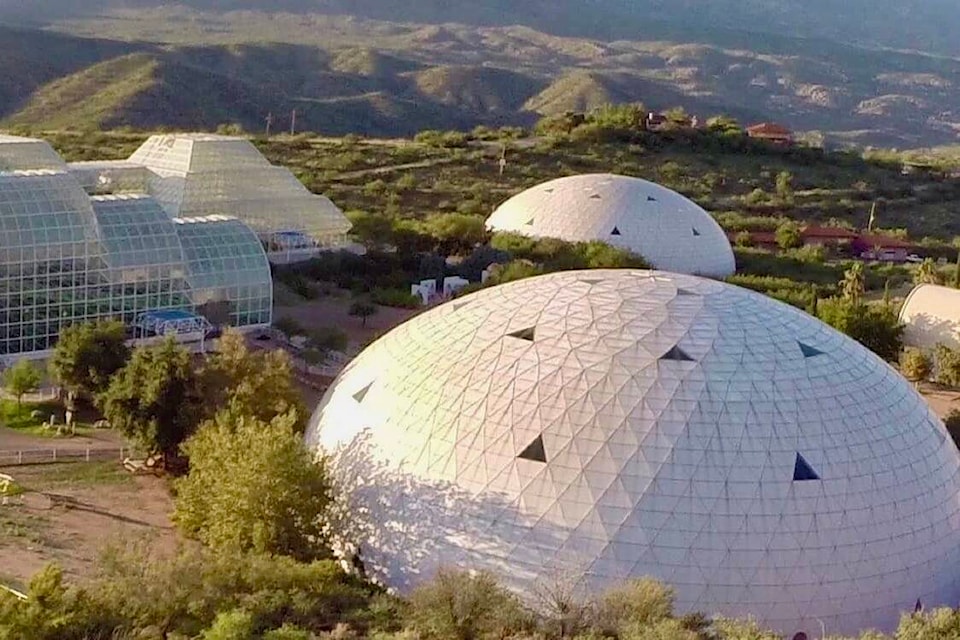When I was young, I was fortunate to be able visit one set of grandparents or the other for many summer breaks. I loved going. I was close to my grandparents and had lots of fun in either Arizona or West Virginia, where they lived respectively.
On one trip to Arizona, I was exploring some of the desert that stretched out beyond my grandparents home, as they lived on the outskirts of Tucson, and what I found has intrigued me my entire life. Off in the distance, in a place they now call Oracle, they were in the beginning stages of building something called the “Biosphere experiment - the Bio Dome.”
The goal of the experiment was to lock a group of scientists inside this geodesic dome for a year to research whether they could be self sufficient and study how the “simulated earth environment” inside the dome would behave. The experiment was a disaster in many ways. The scientists wound up fighting and then not speaking at all. Several of the “environments” failed and the water system clogged. At the end of the year when the scientists were released from the dome, one said living in the dome was “hell on earth,” needless to say he was not invited back.
But the scientists were determined after they got out of the bio dome, to run a better experiment, with separate domes for environments simulating jungles, rainforests, marine environments, deserts, living quarters etc., and Biosphere 2 was born.
Biosphere 2 is a very unique research facility, with the aim of understanding the dynamics of the earth’s ecosystems and the roles that humans play in affecting these systems. The Biosphere 2 project premiered in 1991 and was designed to simulate the conditions and complexities of our planet’s ecosystems in miniature. The facility itself consists of a series of interconnected biomes, which include a rainforest, ocean, savannah, and an agricultural area.
Although I never got to see the second complex of the experiment, I kept up with what was happening, and one of the most remarkable aspects of Biosphere 2 is that it allows scientists to conduct controlled experiments to simulate complex environmental systems that would otherwise be impossible to replicate in the real world. The research conducted at this facility has the potential to make significant contributions to our understanding of environmental systems and their interactions with human activity in a way that was not feasible with prior models.
The research at Biosphere 2 is particularly important at a time when the natural world is rapidly changing, and we need to understand environmental systems better. By examining these systems, researchers can help us find ways to mitigate the effects of climate change, develop sustainable agricultural practices, and improve our understanding of natural processes.
One of the most significant contributions the research at Biosphere 2 can make is to help us better understand the interdependence of physical and biological processes in the environment. For example, the facility’s rainforest biome is particularly important because it allows researchers to examine how deforestation and climate change can affect rainfall patterns and plant growth. These findings are critical because they can help us develop strategies for preserving forests and preventing the loss of biodiversity in the face of global climate change.
Another area where Biosphere 2 research can have a significant impact is in agriculture. The facility’s agricultural area allows scientists to test new farming techniques and develop sustainable methods for food production. These efforts are incredibly essential as the global population continues to grow, and demand for food production increases.
I find it fascinating that the research going on at the Biosphere 2 project has the potential to make a significant contribution to our understanding of the natural world and human impact on it. The interconnected biomes provide a unique opportunity for controlled experiments that allow researchers to simulate complex environmental systems, and the findings can have practical applications for developing sustainable agricultural practices and mitigating the effects of climate change. The data generated by this research will be critical for policymakers and scientists as they seek to create a better future for both our planet and ourselves.
Good lesson for “if at first you don’t succeed, try and try again,” as this time the project is a win-win success.
